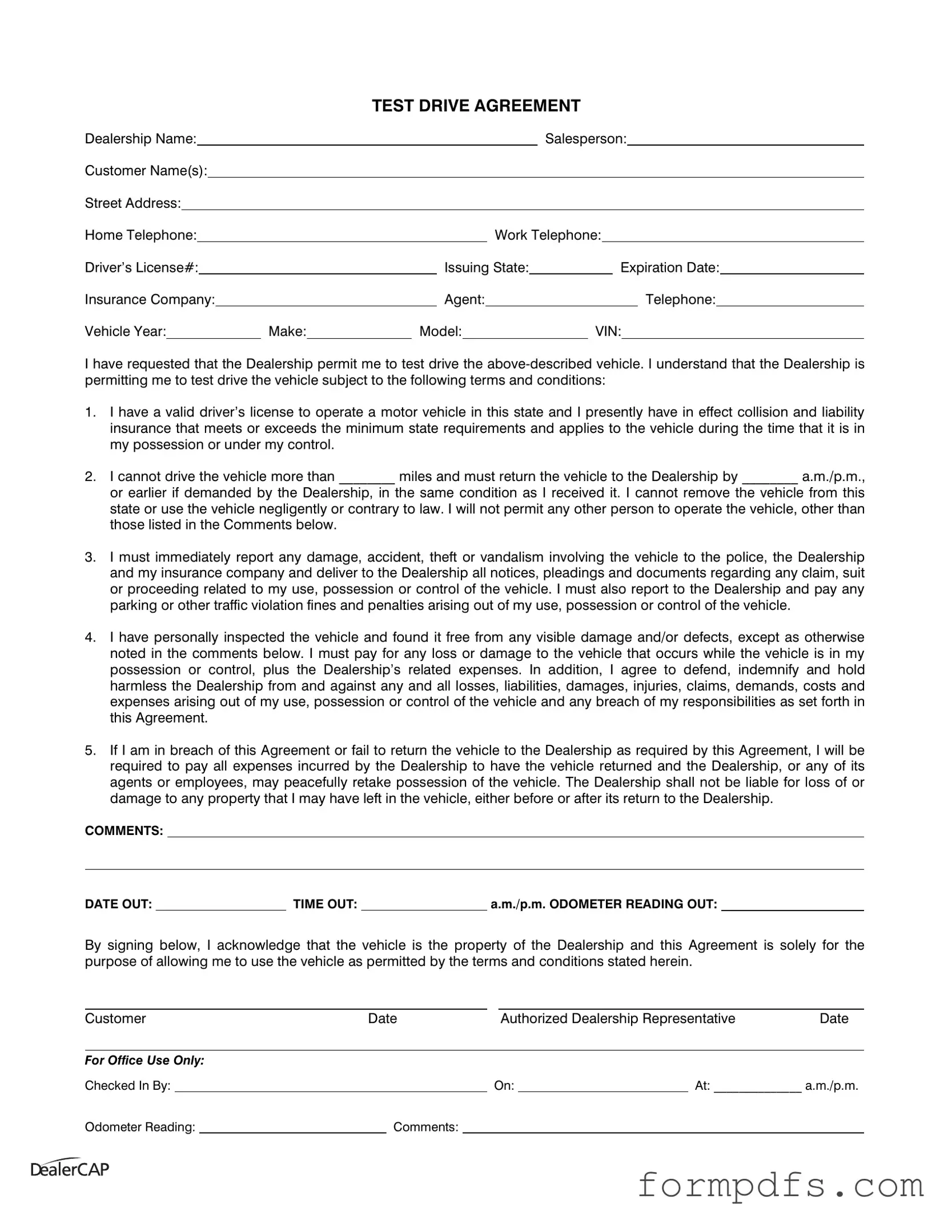What is the purpose of the Test Drive form?
The Test Drive form is designed to establish an agreement between the customer and the dealership regarding the terms and conditions for test driving a vehicle. It ensures that both parties understand their responsibilities and the expectations during the test drive period.
What information do I need to provide on the Test Drive form?
You will need to provide personal information such as your name, address, and contact details. Additionally, you must include your driver's license number, the issuing state, and the vehicle's details, including the year, make, model, and VIN. This information helps the dealership verify your identity and eligibility to drive the vehicle.
Do I need insurance to test drive a vehicle?
Yes, you must have valid collision and liability insurance that meets or exceeds the minimum state requirements. This insurance must apply to the vehicle while it is in your possession or under your control during the test drive.
What are the mileage limits for the test drive?
The Test Drive form will specify a mileage limit, which you must not exceed. This limit is put in place to ensure that the vehicle is returned in a timely manner and in the same condition as when it was taken out for a test drive.
What happens if I damage the vehicle during the test drive?
If any damage occurs while the vehicle is in your possession, you are responsible for paying for the loss or damage. This includes covering any related expenses incurred by the dealership. It is crucial to inspect the vehicle beforehand and note any existing damage in the comments section of the form.
Can I allow someone else to drive the vehicle during the test drive?
No, only individuals listed in the comments section of the form are permitted to operate the vehicle. This restriction is in place to protect both you and the dealership from liability issues that may arise from unauthorized drivers.
What should I do if an accident occurs during the test drive?
In the event of an accident, theft, or vandalism, you must report it immediately to the police, the dealership, and your insurance company. You are also required to provide the dealership with any notices or documents related to the incident.
What happens if I do not return the vehicle on time?
If you fail to return the vehicle as required, you may incur expenses for the dealership to retrieve it. Additionally, the dealership or its representatives may take possession of the vehicle without any liability for personal property left inside.
What should I do if I have further questions about the Test Drive form?
If you have any additional questions or need clarification about the Test Drive form, it is best to speak directly with your dealership representative. They can provide detailed information and address any concerns you may have before signing the agreement.
